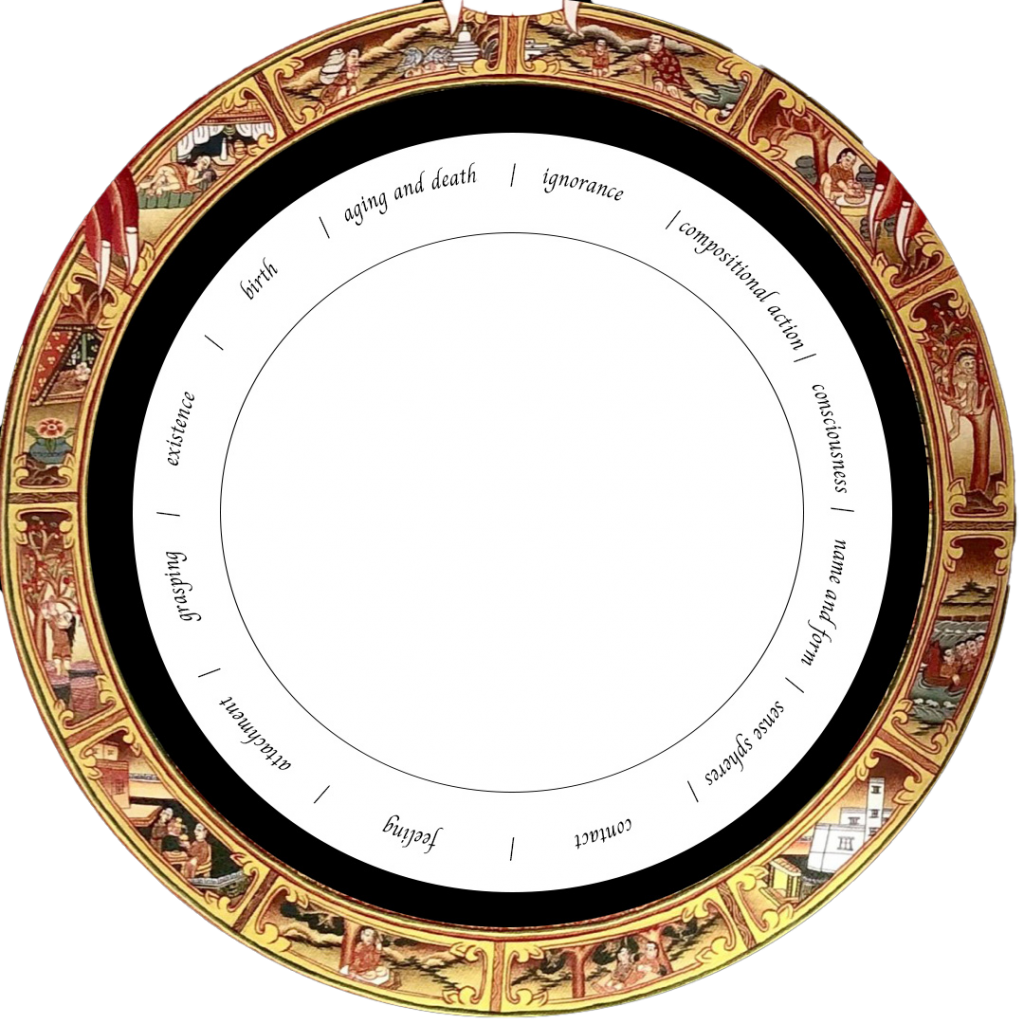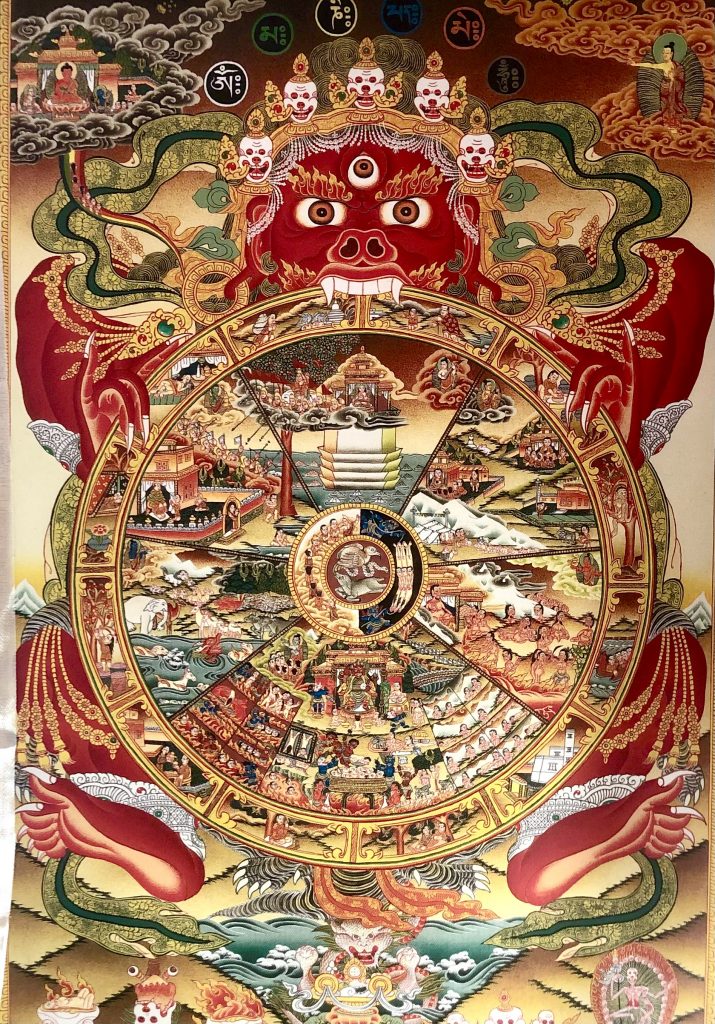Mechanical energy is the sum of potential energy and kinetic energy.
Potential energy is the energy held by an object because of its position relative to other objects, stresses within itself, its electric charge, or other factors.
The kinetic energy of an object is the form of energy that it possesses due to its motion.
Motion is when an object changes its position with respect to a reference point in a given time.
Time is the continued sequence of existence and events that occurs in an apparently irreversible succession from the past, through the present, and into the future.
Existence is the state of having being or reality in contrast to nonexistence and nonbeing.
Reality is the sum or aggregate of all that is real or existent within the universe, as opposed to that which is only imaginary, nonexistent or nonactual.
Energy is the quantitative property that is transferred to a body or to a physical system, recognizable in the performance of [thermodynamic] work and in the form of heat and light.
Thermodynamic work is one of the principal processes by which a thermodynamic system can interact with its surroundings and exchange energy.
A physical quantity, quantitative property (or simply quantity) is a property of a material or system that can be quantified by measurement.
A physical system is a collection of physical objects under study. A thermodynamic system is a body of matter and/or radiation separate from its surroundings that can be studied using the laws of thermodynamics.
Thermodynamics is a branch of physics that deals with heat, work, and temperature, and their relation to energy, entropy, and the physical properties of matter and radiation.
Radiation is the emission or transmission of energy in the form of waves or particles through space or a material medium.
A physical object or physical body (or simply an object or body) is a collection of matter within a defined contiguous boundary in three-dimensional space.
Three-dimensional space (3D space, 3-space or, rarely, tri-dimensional space) is a mathematical space in which three values (coordinates) are required to determine the position of a point.
A mathematical space is a set (sometimes known as a universe) endowed with a structure defining the relationships among the elements of the set.
A set is a collection of different things; these things are called elements or members of the set and are typically mathematical objects of any kind: numbers, symbols, points in space, lines, other geometrical shapes, variables, or even other sets.
A mathematical object is an abstract concept arising in mathematics, where an abstraction is a process where general rules and concepts are derived from the use and classifying of specific examples, literal (real or concrete) signifiers, first principles, or other methods.
That signified and its signifier refer to the two main components of a sign (anything that communicates a meaning that is not the sign itself to the interpreter of the sign), where signified is what the sign represents or refers to, known as the “plane of content”, and signifier which is the “plane of expression” or the observable aspects of the sign itself.
A concept is an abstract idea that serves as a foundation for more concrete principles, thoughts, and beliefs.
A universe is a collection that contains all the entities one wishes to consider in a given situation.
Matter is any substance that has mass and takes up space by having volume.
Volume is a measure of regions (a non-empty, connected, and open set) in a topological space, three-dimensional space.
Mass is an intrinsic property of a body. It experimentally defined as a measure of the body’s inertia, meaning the resistance to acceleration (change of velocity) when a net force (the sum of all the forces acting on an object) is applied. The object’s mass also determines the strength of its gravitational attraction to other bodies.
An intrinsic property is a property of a specified subject that exists itself or within the subject.
- A subject is a being that exercises agency, undergoes conscious experiences, and is situated in relation to other things that exist outside itself; thus, a subject is any individual, person, or observer.
- An object is any of the things observed or experienced by a subject, which may even include other beings (thus, from their own points of view: other subjects).
H.H. the Dalai Lama’s commentary “Defending the Two Truths, Practicing Wisdom”
By meditating on the sphere wherein all dualistic elaborations have been pacified, we accumulate wisdom. And we accumulate merit by deepening our conviction in the validity of the casual principles within the context of conventional truth.
Categories such as “subject and object,” “perception and object,” “one and many,” “self and others,” and of course, the “existence of all phenomena” are dependent upon worldly conventions. They are thus relative.
Bodhicharyavatara:
[108] Analysis and what is to be analyzed
Are linked together, mutually dependent.
It is on the basis of conventional consensus
That all examination is expressed.
[110] If phenomena are truly analyzed,
No basis for analysis remains.
Deprived of further object, it subsides.
That indeed is said to be nirvana.
When the object of an inquiry is subjected to critical analysis, the subject too is revealed to be devoid of any intrinsic reality or intrinsic origination. This absence is described as nirvana, the state beyond sorrow (defined in terms of the cessation of karma and afflictions). So while a meditator is directly experiencing the emptiness of intrinsic existence of all phenomena, there is no basis for grasping onto the intrinsic existence of anything else.
For the meditator in this state, there is no awareness of subject and object. A subject-object distinction could be made, but since the meditator’s mind is totally fused with the absence of inherent existence, there is no need to analyze the emptiness of the analyzing mind itself.





